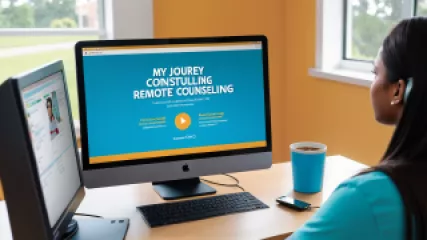Expressive Arts Therapy
Art therapy is a form of expressive arts therapy that utilizes various artistic techniques to promote healing, personal growth, and self-expression. It has been proven to be an effective method for coping with a wide range of emotional, mental, and physical challenges. If you're interested in exploring the benefits of expressive arts therapy and are looking for some art therapy techniques to help you cope, you've come to the right place. In this article, we will delve into the top 7 art therapy techniques for coping.
Before we dive into the techniques, let's briefly discuss what art therapy is and how it works. Art therapy is guided by a trained art therapist who helps individuals explore their emotions, thoughts, and experiences through different art forms such as painting, drawing, sculpting, and collage-making. The process of creating art allows individuals to express themselves in a non-verbal way, providing a safe space for self-reflection and self-discovery.
Now, let's explore the top 7 art therapy techniques for coping:
1. Mandala Creation:
Mandalas are geometric patterns that represent the universe or wholeness. Creating mandalas can be a calming and meditative process. Start by drawing a circle on a piece of paper and then fill it with intricate designs, patterns, and colors. As you focus on creating the mandala, you may experience a sense of relaxation and inner peace.
2. Collage Therapy:
Collage therapy involves assembling different images, textures, and materials to create a visual representation of your thoughts and feelings. Collect magazines, newspapers, photographs, and other materials that resonate with you. Cut out images and arrange them on a piece of paper, allowing your intuition to guide you. This technique can help you explore and communicate complex emotions.
3. Guided Imagery and Drawing:
Guided imagery and drawing involve visualizing a specific scene or scenario and then translating it onto paper. Close your eyes and imagine a peaceful place or a safe environment. Focus on the details and sensations in your mind's eye. Open your eyes and use colors, shapes, and lines to recreate the image. This technique can help you tap into your subconscious and access deeper emotions.
4. Doodling:
Doodling may seem simple, but it can be a powerful tool for self-expression. Grab a pen or pencil and let your hand freely move across the paper. Allow yourself to doodle without any specific goal or outcome in mind. Pay attention to the shapes, patterns, and images that emerge. Doodling can help release stress, promote relaxation, and stimulate creativity.
5. Clay Sculpting:
Working with clay can be a tactile and therapeutic experience. Sculpting allows you to physically mold and shape your thoughts and emotions. Take a block of clay and use your hands to create whatever comes to mind. Focus on the sensation of the clay and the process of shaping it. This technique can be especially helpful for individuals who struggle with verbal expression.
6. Painting Your Emotions:
Painting is a versatile art therapy technique that can be used to explore and express a wide range of emotions. Choose colors that represent your current emotional state and let them guide your brush strokes. Allow yourself to paint freely, without judgment or expectation. This technique encourages emotional release and can provide insight into your inner world.
7. Journaling and Art:
Combining journaling with art can be a powerful way to process and reflect on your experiences. Start by writing about your thoughts, feelings, and experiences in a journal. Then, incorporate art by drawing, painting, or collaging alongside your written entries. This integrated approach can help you gain a deeper understanding of your emotions and facilitate personal growth.
In conclusion, art therapy offers a multitude of techniques that can help individuals cope with various challenges. Whether you choose to create mandalas, engage in collage therapy, or explore other art forms, expressive arts therapy can provide a safe and transformative space for self-expression and healing. So, grab your art supplies and embark on a journey of self-discovery through the power of art.















